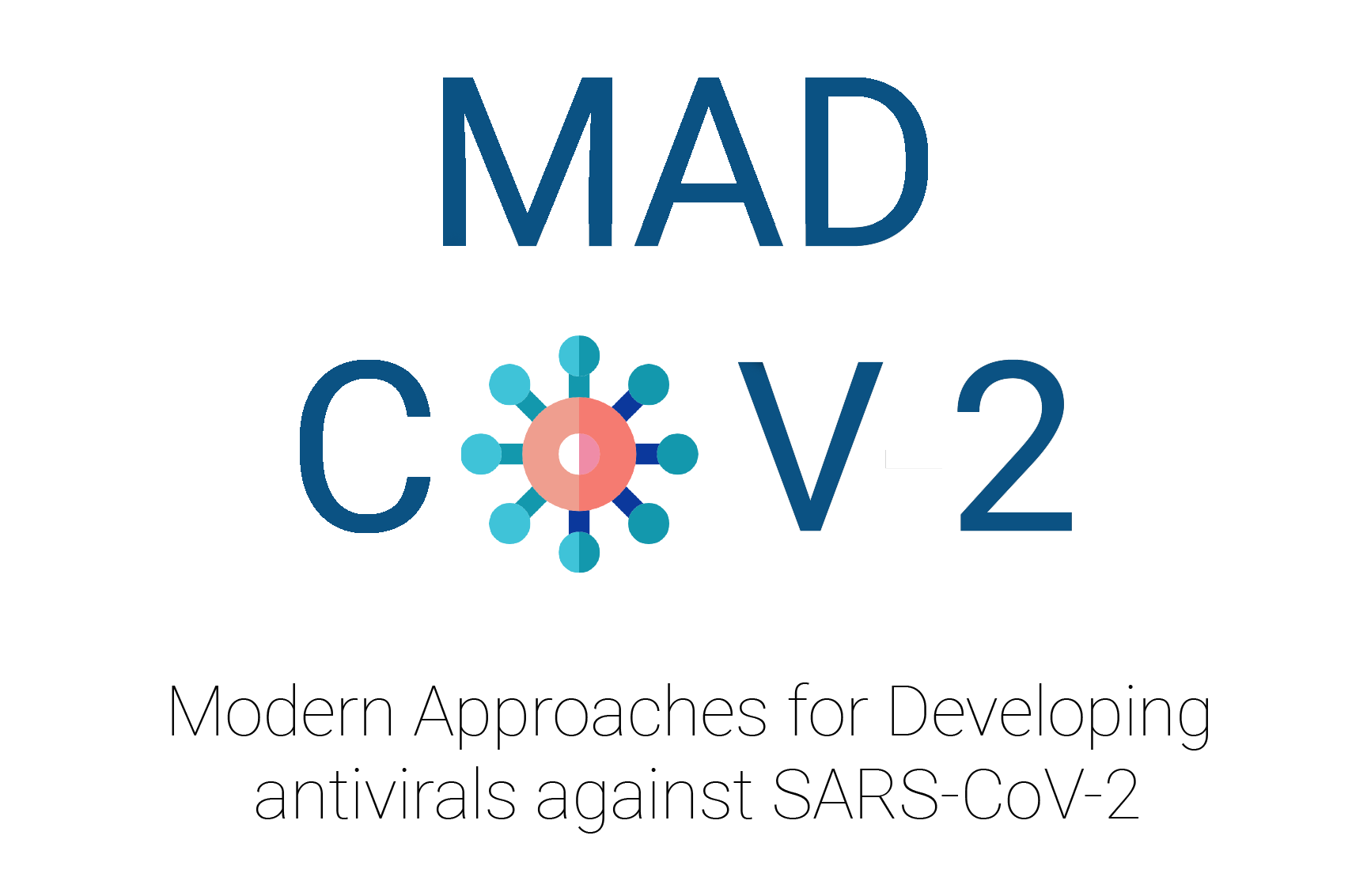Summary
ACE2 (angiotensin converting enzyme 2) is a protein found on the surface of the cells of our lungs and other organs. The SARS-CoV-2 virus, which causes COVID-19, uses ACE2 to break into and infect our cells.
The aim of the MAD-CoV 2 project is to build on and use this knowledge to develop innovative treatments for COVID-19. It will do this via a number of approaches, including engineering human tissue to test new treatments in the lab; studying how to exploit the role of ACE2; and mapping in detail the factors that are critical for virus replication.
The team hopes to rapidly translate this knowledge into new, targeted drugs to fight COVID-19 as well as any future coronavirus outbreaks. The project has committed to making its data and unique tissue reagents available to the entire community for drug testing and development, supporting all other efforts.
Achievements & News
Scientists from IMI’s MAD-COV 2 project have shown that a low dose combination of the antiviral remdesivir and a drug called APN01 (hrsACE2) can stop the SARS-CoV-2 virus which causes COVID-19 from multiplying in cells. ###
Remdesivir is an antiviral that has been approved for use in COVID-19 patients. It works by stopping the virus from multiplying. However, higher doses can cause damage to the liver and the lungs. ‘Human recombinant soluble ACE2’, also known as hrsACE2, is a genetically modified variant of the angiotensin converting enzyme 2 (ACE2), a cell membrane protein that the coronavirus hijacks in order to enter our cells.
Previous laboratory studies have shown that hrsACE2 lures the coronavirus to attach itself to the enzyme copy, hrsACE2, instead of to the actual cells, thereby reducing the viral load in cells. In this study, the researchers tested combining remdesivir and hrsACE2 in cell cultures from monkeys, human liver spheroids and human 3D kidney replicas, so-called organoids grown from stem cells. The use of low doses of each substance was able to reduce toxicity, making the drugs safer to use.
By targeting different aspects of the viral cycle simultaneously, the researchers have shown that effectiveness of the treatment can be boosted while reducing the risk of side-effects. They hope their findings will pave the way for clinical trials.
The study was published in the journal EMBO Molecular Medicine.
Find out more
- Read the article in full
Participants
Show participants on mapEFPIA companies
- Apeiron Biologics AG, Wien, Austria
- Jlp Health GMBH, Vienna, Austria
- Stemcell Technologies Uk LTD, Cambridge, United Kingdom
- Vironova AB, Stockholm, Sweden
Universities, research organisations, public bodies, non-profit groups
- Fundacio Institut De Bioenginyeria De Catalunya, Barcelona, Spain
- Justus-Liebig-Universitaet Giessen, Giessen, Germany
- Medizinische Universitaet Wien, Vienna, Austria
- Statens Veterinaermedicinska Anstalt, Uppsala, Sweden
Small and medium-sized enterprises (SMEs) and mid-sized companies (<€500 m turnover)
- Inserm Transfert SA, Paris, France
| Participants | |
|---|---|
| Name | EU funding in € |
| Fundacio Institut De Bioenginyeria De Catalunya | 499 863 |
| Inserm Transfert SA | 269 875 |
| Institut Fuer Molekulare Biotechnologie GMBH (left the project) | 745 605 |
| Justus-Liebig-Universitaet Giessen | 600 000 |
| Medizinische Universitaet Wien | 354 395 |
| Statens Veterinaermedicinska Anstalt | 1 279 931 |
| Total Cost | 3 749 669 |
